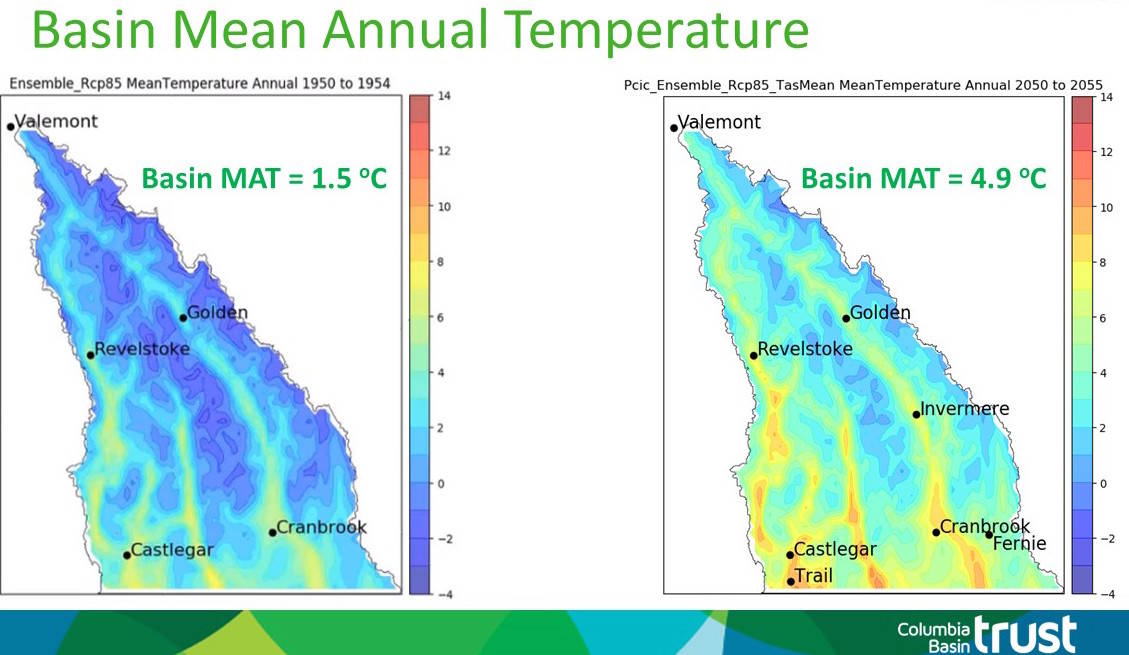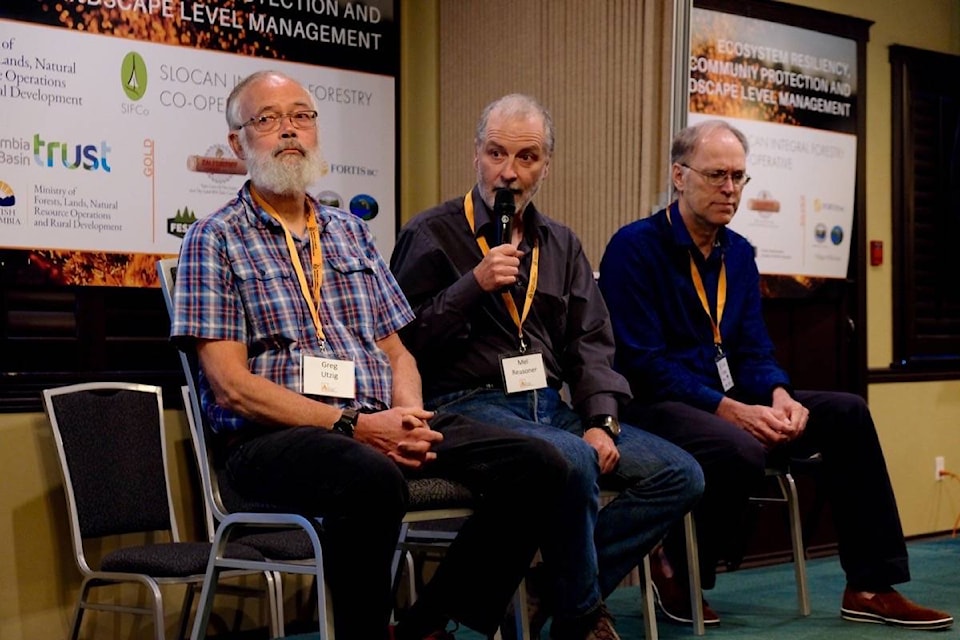The average temperature in an average year in the 2050s in the Kootenays will be warmer than the most extremely hot years in the 20th century. (See the maps below.)
That’s even if there is a major effort to reduce carbon emissions.
“But it will be worse if there is a business-as-usual carbon scenario,” climate scientist Mel Reasoner told the audience of about 215 at the Kootenay Wildfire and Climate Change Conference.
His talk was a fitting background piece for the rest of the conference, much of which looked at how to deal with wildfire danger in light of projected increases in temperature and decreases in precipitation.
Reasoner said the mean annual temperature in the West Kootenay between 1961 and 1990 was 7.8 degrees Celsius, and that computer models tell us the area will warm above this temperature by about 2.6 degrees by mid-century. So following model projections, the mean annual temperature in the 2050s could be 10.4 degrees Celsius.
He also pointed out that the observed rate of warming in the area over the last 50 years is similar to the rate that was projected.
“Climate models have done a pretty good job of predicting what has happened, even though they get a lot of bad press,” Reasoner said, referring to comments such as those last year by former federal cabinet minister Joe Oliver.
Reasoner is a climate change consultant now based in Nelson whose past academic research focused on climate change and vegetation history in western North America. He has taught courses on weather, climate, climate change, paleoclimatology and geology.
He said winter precipitation in the West Kootenay is projected to go up by about 5 to 6 per cent by the 2050s and winter temperatures are projected to go up by about 2.7 to 3.1 Celsius, “so in general we are looking at warmer winters in the future.”
Summer precipitation is expected to go down by 7 to 13 per cent, he said.
Reasoner warned against drawing conclusions from one particularly wet summer or cold winter. He cited a headline during a recent cold winter: “What global warming? How about global cooling?”
“I think it is our DNA to focus on the variability,” he said. “We like to talk about how warm it was last summer or how cold last winter was, and we tend to miss the underlying trend, and that trend has been creeping up rapidly, and will continue to do so in the future.”
Reasoner said his consulting company is working on developing software that measures the probability of weather changes in specific times and places.
He used Cranbrook as an example.
“The probability of the temperature exceeding 41 degrees is virtually zero until about 2030, but by 2060 it is up to 60 per cent. And if your your bridge decks fail at 41 degrees then you have some useful information for planning.”
He said if this technique can be used for bridge decks it could be used for many other things.
Reasoner began his talk by saying that almost 30 years ago James Hanson, then the director of the NASA Goddard institute of Space Studies, provided an early warning to a congressional committee that climate change was real and that we were going to see it getting worse in the future.
“He was going out on a limb because there had not been much warming to that point, but Hansen understood atmospheric physics and the greenhouse effect. The CO2 contribution to it had been known for a long time, but what he had seen coming was a fairly rapid warming over the subsequent decades. This was no surprise to the scientific community.”
Related stories in the Nelson Star:
• More planned forest fires needed: wildfire expert
• Nelson conference will explore climate change and wildfire
• COLUMN: Will West Kootenay forests survive?
• COLUMN: Climate change and West Kootenay wildfires
bill.metcalfe@nelsonstar.com
Like us on Facebook and follow us on Twitter

